

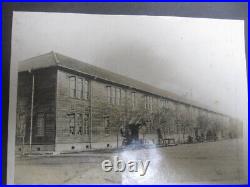
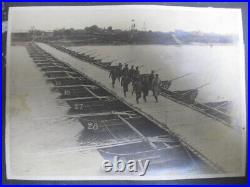
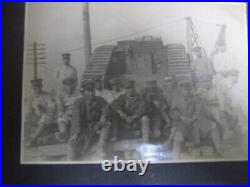
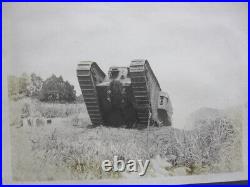
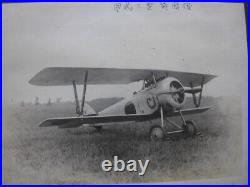
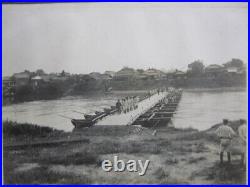
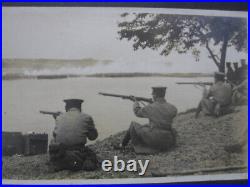
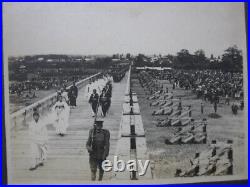
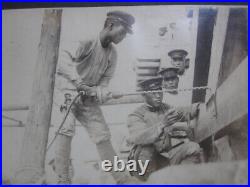

Photo album of the. Of the former Japanese engineer school. It is thought to be from the Taisho period. 2.5cm There are 48 photos. Contains rare photos of British lozenge tanks and Type 3 fighter aircraft (originally the French Nieuport 24). I think it is valuable as a reference material. Since the title says detachment, this is a photo of the dispatch destination. International Buyers – Please Note.


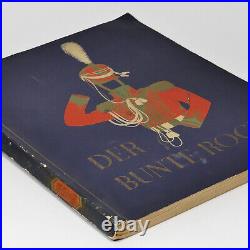

It is a treasure trove of information on German Army uniforms during this period. Indicating above each image the region of the uniform Baden, Frankfurt, Bayern, Gotha, etc. 252 coloured cigarette cards In.


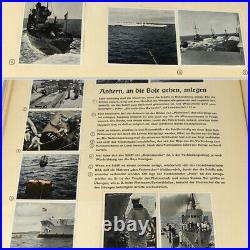

German Reichsmarine / German Reich Navy. 294 colored cigarette card pictures. Included are flag-signal charts and naval ensigns plus a chart showing the national flags, etc. All pages are complete and tight in the binding.




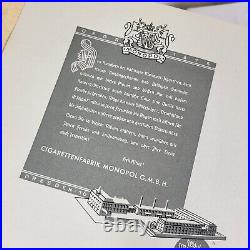

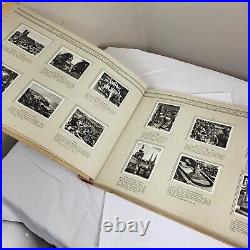
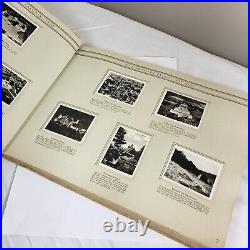
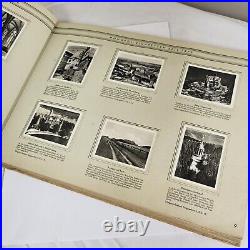
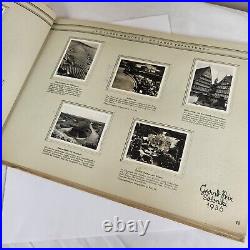
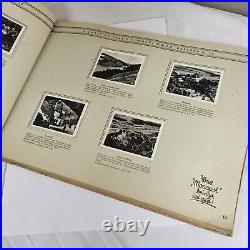
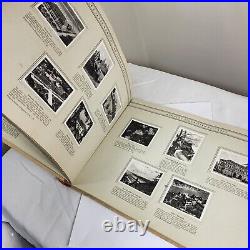
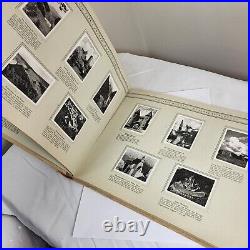
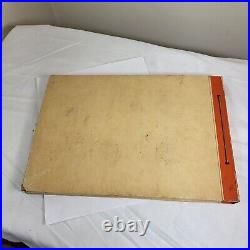


1936 MONOPOL German CIGARETTE cards & Album Complete photos. This is an album filled with German cigarette cards. It is dated 1936. The album is complete with all cards.


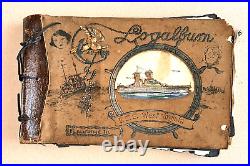
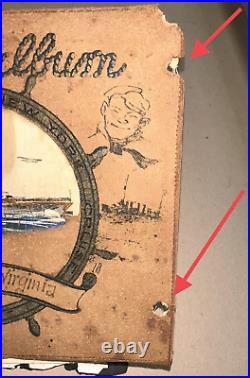
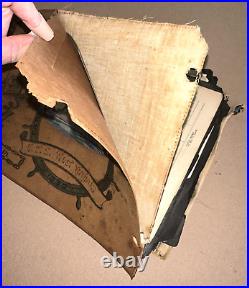
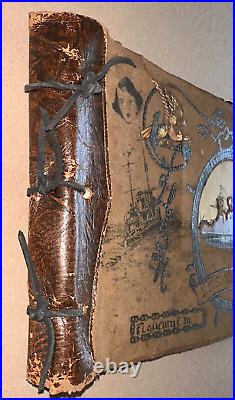

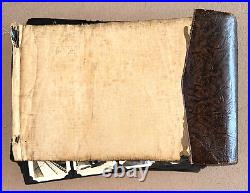
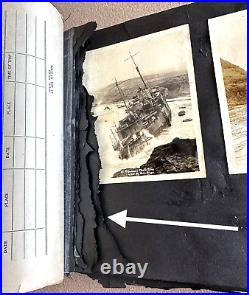
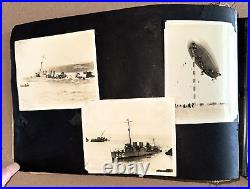
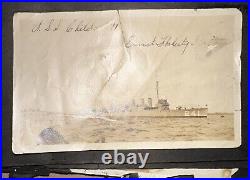
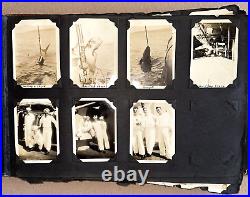

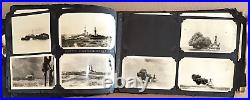
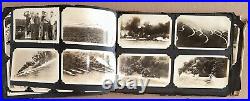
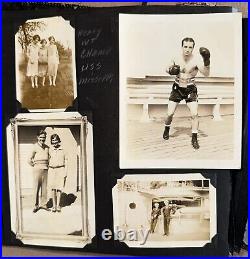
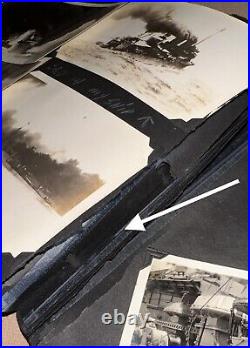
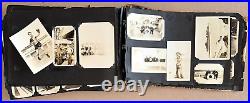
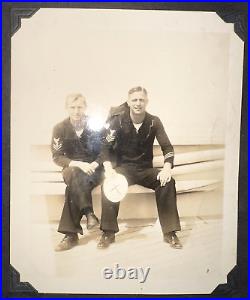
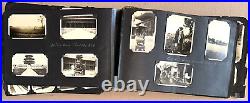
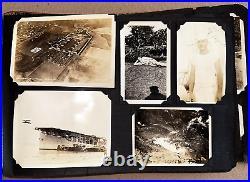
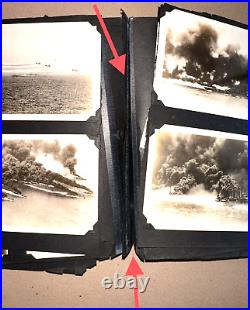
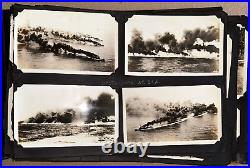

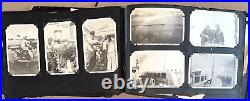
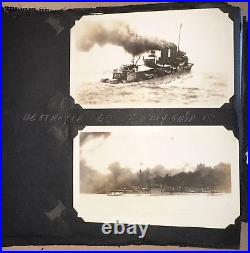

RARE 1920’s NAMED US NAVY PHOTO ALBUM ERNEST M. FLAHERTY USS WEST VIRGINA. Flaherty retired to Sarasota, FL where I live. Flaherty’s Album with Signed Photos of Admiral Richard Byrd from the famous Antarctica Expedition see. Flaherty was a shipmate and good friend of Admiral Byrd’s. There are NO PHOTOS of Admiral Byrd in this Album. Also, photos of friends and girlfriends. USS West Virginia, a 32,600-ton Colorado class battleship built at Newport News, Virginia, was commissioned in December 1923, the last battleship completed for the United States Navy for nearly two decades. During the 1920s and 1930s, she served in the U. Fleet, taking part in “Fleet Problems” and other exercises as part of the continuing effort to develop tactics and maintain the Navy’s combat readiness. With much of the rest of the Fleet, she deployed to New Zealand and Australia in 1925 in an important demonstration of the Navy’s trans-Pacific strategic “reach”. West Virginia’s base was moved to Pearl Harbor in 1940, and she was there on 7 December 1941, when the Japanese attacked with an overwhelming force of carrier aircraft. In that raid, the battleship was hit by two bombs and at least seven torpedoes, which blew huge holes in her port side. Skillful damage control saved her from capsizing, but she quickly sank to the harbor bottom. More than a hundred of her crew were lost. Salvaged and given temporary repairs at the Pearl Harbor Navy Yard, in April 1943 West Virginia steamed to the West Coast for final repair and modernization at the Puget Sound Navy Yard. 14″-15″ wide depending on where you measure. The Leather Album Cover is 14″ wide, but the pages extend to 15″ wide. Condition: Album itself is in very poor shape. The Leather is dirty & album areas are stained. Looks like the entire back of the album is missing. Photos are still in good condition. My Consignor did not realize the value of this album and tore out photos he thought were important to sell individually. So, many photos are missing & many pages are torn and photos have been removed. My Consignor no longer knows where the removed photos are located. Pages of the album are lose, falling out, detached, and missing. Any defects not mentioned but visible in the pictures will be considered as “described”. PLEASE let me know if you need to get it sooner.



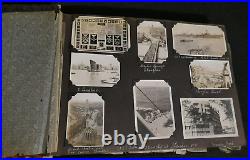
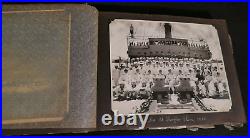
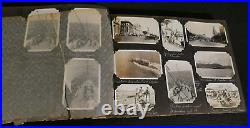
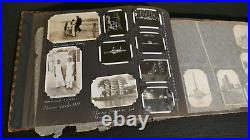
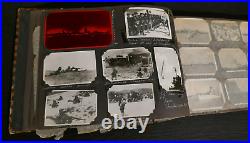
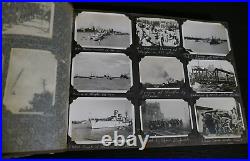
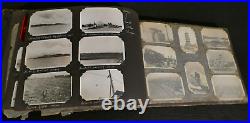
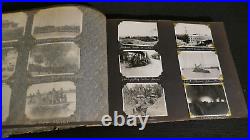
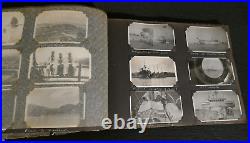
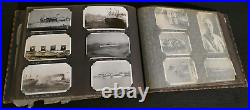


USS Tulsa PG-22 Gunboat 220 Photograph Album 10×14 Shanghai China Interwar, “Galloping Ghost of The South China Coast” 1930’s. USS Tulsa PG-22 Gunboat 220 Photograph Album 10×14 Shanghai China Interwar Era – Early WWII. As Photographed with some wear and aging as seen, one or two loose photos, a fantastic variety of period original photographs and absolutely one of the very best and almost completed noted photo albums of one of the US Navy’s Patrol Gunboats that served in China during the earliest days of WWII; Recent Estate Acquisition & Presented as Acquired, Exceptionally Rare (see USS Tulsa History below). Tulsa was laid down on 9 December 1919 at the Charleston Navy Yard; launched on 25 August 1922; sponsored by Miss Dorothy V. McBirney;[a] and commissioned there on 3 December 1923, Lieutenant Commander Robert M. Tulsa left Charleston Navy Yard on 19 January 1924, bound for the Caribbean to join the Special Service Squadron. She called at Key West, Florida, on 22 January, before proceeding to Baytown, Texas, where she took on fuel four days later. When civil strife broke out in Nicaragua in the late 1920s, details of marines and bluejackets from Tulsa landed to protect lives and preserve property. Tulsa supported operation in Nicaragua from August 1926 to December 1928. En route for the west coast late in 1928, Tulsa transited the Panama Canal as she prepared for duty in the Far East. She departed San Francisco, California, on 24 January 1929, called at Honolulu and Guam, and proceeded to Manila. Designated flagship of the South China Patrol on 1 April, Tulsa operated out of Hong Kong, British Crown Colony; and Guangzhou, China, for cruises up the Pearl River and along the south China coast. At Guangzhou in May 1929, she witnessed the bombing of Chinese naval vessels by airplanes of the opposing faction in a Chinese civil war flaring at the time. Relieved in June by Mindanao as flagship of the South China Patrol, she steamed up the coast to Shanghai, beginning a two-week deployment with the Yangtze Patrol in which she cruised as far upriver as Hankou. She continued under the direct operational control of CINCAF into the 1930s, being later reassigned to the South China Patrol and observing conditions along the south China coast during the period following the outbreak of the undeclared Sino-Japanese war in July 1937. As tensions increased in the Orient in 1940 and 1941, Admiral Thomas C. Hart, CINCAF, incrementally reduced the Asiatic Fleet’s presence in Chinese waters. Withdrawn to the Philippines in May 1941, Tulsa joined the Inshore Patrol, guarding the sea approaches to Manila Bay. On 10 December 1941, two days after the outbreak of war in the Philippines, a heavy Japanese air attack devastated Cavite, the base of the Asiatic Fleet, near Manila. Standing in from the Corregidor minefields, Tulsa anchored off the burning base as the last Japanese planes departed. She called away all of her boats and sent fire and rescue parties ashore to bring off what wounded could be rescued from the holocaust. At 19:00, she recalled all hands that were ashore; and, within hours, Tulsa, Asheville, Lark, and Whippoorwill retired toward Balikpapan, Borneo. After a brief stay at that port, she called at Makassar before receiving orders to proceed to Surabaya, Java, in the Netherlands East Indies, where she spent Christmas. Then, steaming independently, she cruised to Tjilatjap, on the south coast of Java, where her landing force began to receive training in jungle warfare. While engaged on convoy duty in late February, Tulsa received orders to proceed to a point 300 mi (260 nmi; 480 km) to the south of Java. En route, she learned that her mission included searching for survivors of the seaplane tender Langley, sunk on 26 February 1942. When she arrived at the scene, however, she found only traces of wreckage, but no survivors. Unbeknownst to Tulsa, Langley’s survivors had already been rescued by USS Whipple (DD-217) and Edsall. Whippoorwill already had begun rescue operations, yet needed medical facilities which Tulsa had on board. With Java being rapidly encircled by the onrushing Japanese, orders to retire were not long in coming. On 1 March 1942. Tulsa, Asheville, Lark, and Isabel crept out of Tjilatjap, bound for Australia. Tulsa and her two companions arrived in Australian waters shortly thereafter. For the seven months following her arrival in Fremantle, she engaged in routine patrols off the Australian coast before being refitted at Sydney in October 1942. Here, she received British ASDIC, degaussing equipment, Y-gun, and Oerlikon 20 mm anti-aircraft autocannons. Thus outfitted, she served once again as a convoy escort, occasionally towing targets as well. Tulsa with a PT boat at Milne Bay, February 1943. In the latter half of 1942, she was attached to Submarine Forces, Southwest Pacific, and operated independently out of Brisbane as a target for the submarines out of Fremantle. She then gave submariners practice in making approaches and battle surfacing. With the beginning of the Buna-Gona offensives in New Guinea, Tulsa escorted PT boats to take part in that campaign and operated between Milne Bay, New Guinea, and Cairns, Australia. When the PT boat base at Kana Kopa, on the southeastern shores of Milne Bay, was established in November 1942, Tulsa brought in much-needed equipment to aid in the operations being-conducted from that base. But five days before Christmas 1942, Tulsa grounded on an uncharted pinnacle and damaged her ASDIC gear, necessitating a return to yard facilities for repairs. Soon returning to the war zone, she resumed patrols off Milne Bay. In the short, sharp action which followed, Tulsa put up a spirited defense with her 3-inch and 20 mm guns antiaircraft battery, driving off the attackers with no damage to herself, while dodging 12 bombs. On one occasion while serving as a PT boat tender, Tulsa towed PT-109, later commanded by future U. After a major overhaul in December 1943, she resumed operations in the Milne Bay-Cape Cretin area. She departed the bay on 8 January 1944, with a fuel barge in tow, en route to Cape Cretin. Anderson, Commander, Task Unit 76.5.3 (TU 76.5.3). Under the control of Commander, Escorts and Mine-craft Squadrons, 7th Fleet, she served in the Finschafen-Buna area and participated in the Hollandia strike on 26 April and the Wakde landing on 17 May. She then continued in her role of escort vessel and patrol craft in the New Guinea-Australia area before proceeding to the Philippines in November 1944. Returning to the scene of her hurried departure nearly four years before, Tulsa continued operations with the 7th Fleet in the Philippines. On 18 December 1944, she was renamed Tacloban, after a town on the island of Leyte, where American forces had landed a scant two months earlier, freeing the name Tulsa to be used for the planned USS Tulsa (CA-129). Navy swept northward towards the Japanese home islands, and fierce fighting ensued on Okinawa and Iwo Jima, Tacloban performed the necessary tasks of convoy escort and local patrol vessel at fleet anchorages. On 26 August 1945, she was detached from duty with the Local Defense Force, Macajalar Bay, on the northwestern coast of Mindanao, and sent to Leyte. Arriving a week later, she received orders to accompany USCGC Ingham (WPG-35) and LCI-230 to Buckner Bay, Okinawa. On 7 September, en route to her destination, Tacloban was slowed by an overheated bearing, and her speed dropped to 3.1 kn (3.6 mph; 5.7 km/h). Left to proceed in company with LCI-230, Tacloban limped into Buckner Bay on 13 September. Task Force 74 (TF 74), to which she had been attached, sailed for Shanghai, China, two days later; but Tacloban, an “Old China Hand, ” could not make the trip and remained at Buckner Bay. Following voyage repairs, she continued across the Pacific and arrived at Pearl Harbor on 18 December 1945. Thirteen days later, she headed for the California coast and arrived at San Francisco, on 10 January 1946. Check back often – we search estates and sources across the world to bring a fine selection of militaria. Please review all photos for details regarding the condition of the item listed – further condition information will be included in the listing as is relevant, if you need additional photographs or have questions regarding the condition please do not hesitate to ask. I describe all items to the best of my ability – please do not hesitate to ask any and all questions prior to the close of the listing. Mistakes very rarely occur – however if one does please rest assured that it will be corrected. International Buyers are Welcome! This item is in the category “Collectibles\Militaria\WW II (1939-45)\Original Period Items\United States\Photographs”. The seller is “tortugaacquisitions” and is located in this country: US. This item can be shipped worldwide.
- Conflict: WW II (1939-45)
- Original/Reproduction: Original
- Theme: Militaria
- Region of Origin: United States
- Country/Region of Manufacture: China
- Modified Item: No


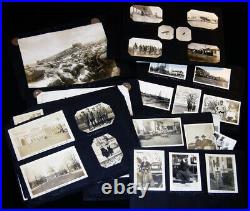
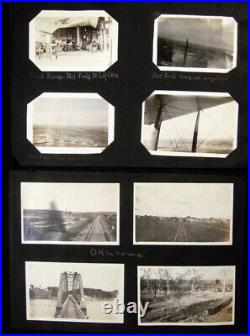

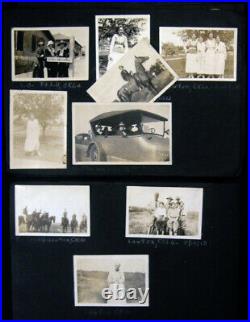
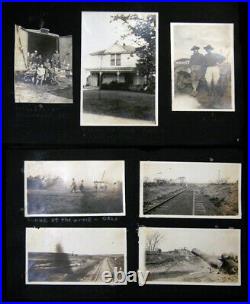
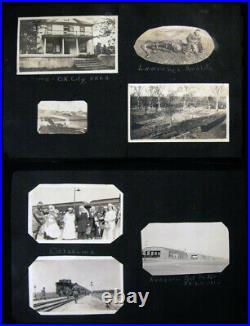
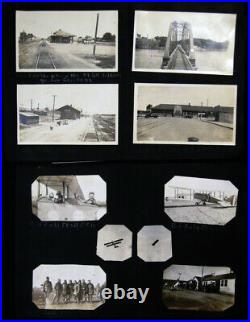
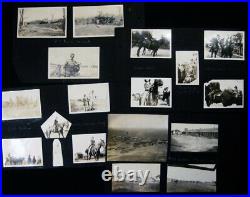
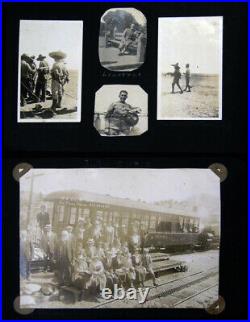
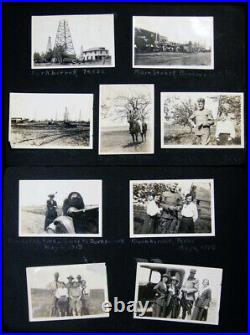
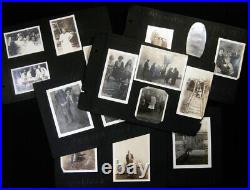
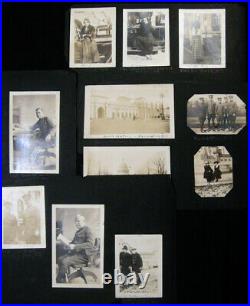

[027793] (Americana – 20th Century – Photography – Military – WWI – Oklahoma – Washington DC). 1918 -1920 Military & Social Visual History: Photograph Album Oklahoma & Western U. Washington DC; Wernersville PA & Others. Over 100 are of Oklahoma and surrounds: Fort Sill, the barracks and grounds, candid shots of the personnel, the post airfield, aircraft, fliers, hangars and including an aerial view by the Aerial Photographic Section; horses and riders; a couple of Native Americans; Chickasaw & Mustang train station buildings; Knights of Columbus Home in OK city; several images of a wreck of a tank truck; one of nurses arriving via train; several of women visitors & with their base personnel friends during social activities. About 90 are personal photos & tourist views of Washington, DC including small commercially-printed imagery; several of military personnel, including officers. One image of a woman entering an automobile is identified below, The Colonel’s Packard & I Wash. The car has the military identification of the quartermaster corps. With various other candid military & civilian portraits taken in that city; also architectural views of Federal buildings, homes and images taken from altitude. About 25 images were taken in Denver and on a Pikes Peak CO excursion; another 15 from Texas, the border area and Burkburnnet. Another group of about 30 images are identified as taken in the Wernersville PA area, mostly of family members; these are not identified. The balance of the photographs are of family and friends in various places. Photos vary in size, from 2″ x 3″ to 6″ x 8″; the album pages approx. 7″ x 10″ size. The leaves are disbound, with only the bottom cover here. Some of the images are detached from the pages and loose; these may match some of the open, identified spaces on the leaves. Some images with fading and edge-wear or crinkling; generally the photos were well-taken and are in good to very good condition. This item is in the category “Collectibles\Militaria\1919-38\Original Period Items”. The seller is “475today” and is located in this country: US. This item can be shipped worldwide.
- Original/Reproduction: Original
- Theme: Militaria
- Time Period Manufactured: 1919-38
- Country/Region of Manufacture: United States


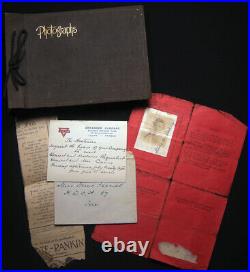
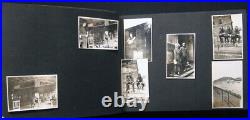
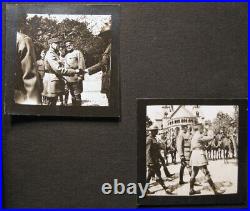

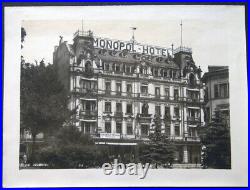
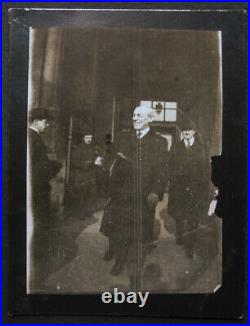
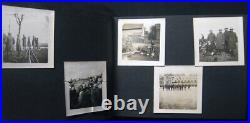
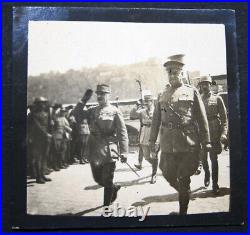
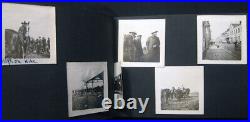
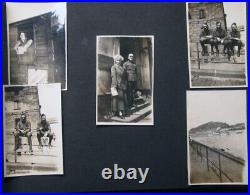
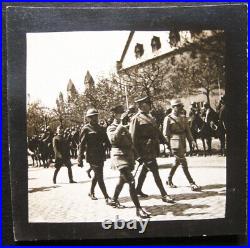
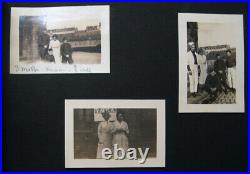

[028456] (Americana – 20th Century – Military History – World War I – Medical History – Nursing – Red Cross). 1919 – 1920 Photograph Album of Irene Muir Farrell of the American Red Cross, with Related Ephemera. Europe: Over 130 photographs, of varying formats and mostly small snapshots, with several 3″ x 5″ examples. The images are tipped-in at the top edge; some are identified on the front lower edge front; often, they are further identified on the backs of the images, the text visible when slightly raised. Including: retreat, the Coburg post office; retreat of forces, the Rhine; polo and the donut tent with volunteers, various soldiers at ease; the M. Canteen; Ostend & Versailles; Strasbourg; bombed buildings, including the library at Louvain; 8. Also, laid-in is a hand-written invitation card, on Y. Beranger Gardens American Officers Club Tours – France imprint, The Hostesses request the honor of your company to meet General and Madame Regnechot (&) General and Mrs. Connor Friday Afternoon. About 3. ½ size, with the hand-addressed plain envelope addressed to Miss Farrell at H. (with) her Worker’s Permit identification booklet also laid-in. This document gave her permission while under the governance of military law, to work among the American Troops for the American Red Cross; it bears her name, passport number and signed photograph. Very worn, split along the old fold lines; still about fair to good condition; about 3. 3/8″ x 5″ size, printed in English & French on red paper. (also) A loose newspaper clipping laid-in has the M’Crae’Flanders’ Field’ poem. 5 3/4″ x 8 1/4″ size; bound in dark brown flexible cloth over cardstock boards, oblong format, bound with black cord. Some edge, tips wear and fading to the cloth; one small photo torn, a few loosened from their moorings; in very good condition overall. This item is in the category “Collectibles\Militaria\1919-38\Original Period Items”. The seller is “475today” and is located in this country: US. This item can be shipped worldwide.
- Country/Region of Manufacture: United States


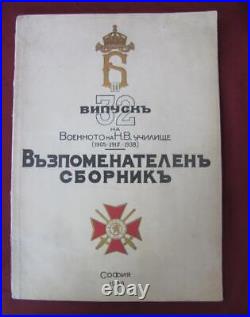
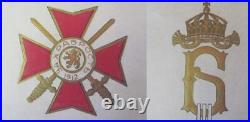
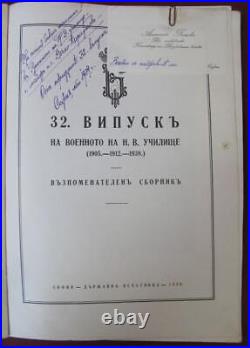
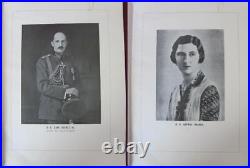
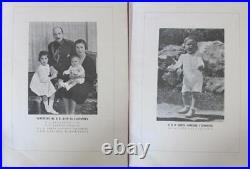
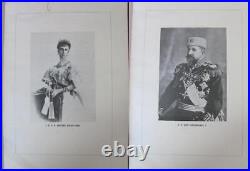
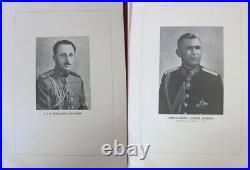
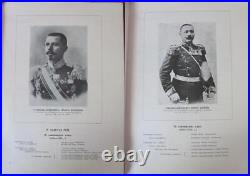
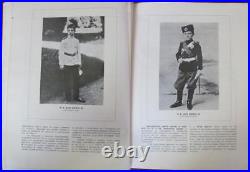
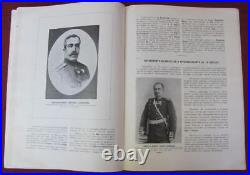
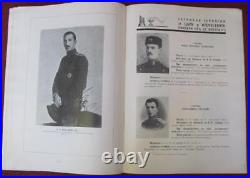
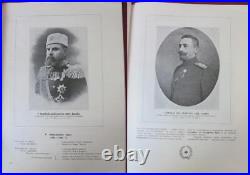

1938 ANTIQUE KINGDOM BULGARIA MILITARY SCHOOL JUBILEE LUXURY PHOTO ALBUM RARE. DESCRIPTION: Offered to you is this antique 1938 rare jubilee photo album “Military School” from the Kingdom of Bulgaria. The album is related to the 32 year anniversary of the creation of the military school 1905 – 1938. In it are incredible photos of the royal family and the Bulgarian generals. For condition see photos. Scarce and highly collectable item. Thank you for your patience and understanding. They are in no way advertised, recommended or authorized to be used as medical equipment today. TERMS OF SALE: – All items are guaranteed genuine and as described. This item is in the category “Collectibles\Militaria\1919-38\Original Period Items”. The seller is “globalantiques” and is located in this country: BG. This item can be shipped worldwide.


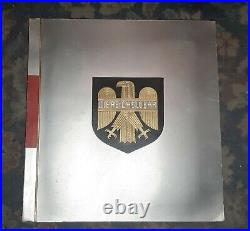
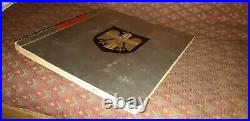


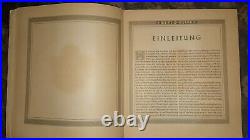
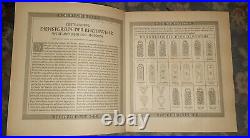
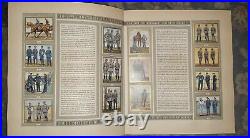
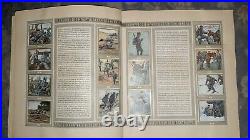
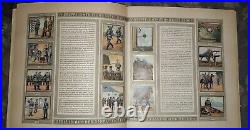
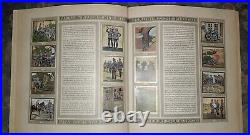
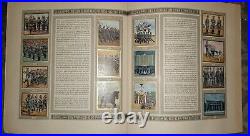
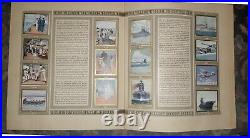

WW2 German Cigarette Cards Album (Complete) VERY RARE. 1933 published by Haus Neuerburg; Waldorf-Astoria and Eckstein Halpaus. These German cigarette books were collected by the German public before World War Two and in the early days of the war. Each album was profusely illustrated with photographs collected by the owner from cigarette packs and pasted into the album. This album is used to record the Reichswehr pictures / The following cigarette brands are enclosed: Nürburg / Overstolz / Ravenklau / Löwenbrück and Güldenring from Haus Neuerburg Cologne a. Colonel and Blaupunkt from Waldorf-Astoria Munich; Rarity from Eckstein-Halpaus Dresden. Group: ranks of the Reichswehr / II. Group: the main weapons of the army / III. Group: The technical weapons / IV. Group: Entry and training / V. Group: Troop exercises in the army / VI. Group: Life in the barracks / VII. Group: Welfare and supply / VIII. Group: Permitted and prohibited weapons / IX. Group: Present and Past / X. Group: Our Imperial Navy. Cardboard cover with embossing. All 280 pictures are completely glued in. The collector’s picture album is complete! Cover rubbed, soiled and bumped, pages browned, entry on endpaper, few traces of glue; otherwise the album is in good condition. This item is in the category “Collectibles\Militaria\1919-38\Original Period Items”. The seller is “mtmestas” and is located in this country: US. This item can be shipped to United States.
- Country/Region of Manufacture: Germany
- Theme: Militaria
- Original/Reproduction: Original
- Time Period Manufactured: 1919-38

























































































































